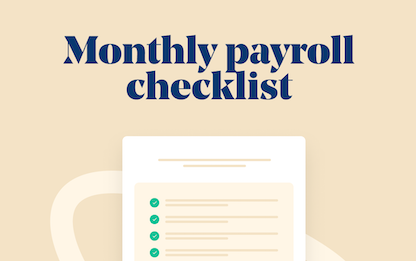- Blog
- |Managing Payroll
- >PAYE and Tax
- >a-guide-to-tax-codes
UK Tax Codes Explained for Employers: What Do They All Mean?


Do you find explaining tax codes to employees complicated and confusing? If so, you’re likely not alone. Chances are that many other UK employers feel the exact same way.
However, considering that tax codes are an essential requirement under UK law, it’s crucial to understand what they mean and how they work.
In this guide, we explain what UK tax codes are as well as what the different letters and numbers mean, how tax codes are calculated, why they change sometimes, and more.
Let's get code cracking, shall we?
What is a tax code?
A tax code is a sequence of numbers and letters that tells employers how much tax-free personal allowance (PA) or income an employee has for a tax year.
Tax codes are especially valid if you use the Pay As You Earn (PAYE) system, as it allows you to deduct tax and National Insurance contributions (NICs) directly from your employee's earnings.
His Majesty's Revenue and Customs, or HMRC, typically works out the tax code for your employees to ensure they’re not overpaying or underpaying their tax amount.
When hiring a new employee, you’ll often find their tax code on their P45 form or the Starter Checklist.
Most UK employees have cumulative tax codes — where their tax is calculated based on their overall earnings within a tax year. Sometimes, a need for an emergency tax code arises (more on that later).
The most common tax code for the 2022/23 tax year is 1257L. But what do the letters and numbers on a tax code all mean? Let’s find out.
What are the different tax codes here in the UK?
In the UK, tax codes are made up of both letters and numbers. So, let’s look at the letters and numbers that make up different tax codes.
What do the numbers mean?
The numbers tell you how much tax-free income an employee can get in a tax year.
For instance, 1257L means employees can earn up to (or have a personal allowance of) £12,570 without paying any tax. It’s HMRC that determines what that number is.
What do the letters mean?
The letters help UK employers understand an employee’s personal circumstances and how they affect their personal allowance.
“L,” in the earlier example, means employees are entitled to a tax-free allowance.
Here are other examples of letters that suffix or prefix numbers on a tax code and what they mean.
BR: Basic Rate (or BR) indicates that all of an employee’s income will be taxed at 20% — the basic tax rate. This code is typically used when an employee has two or more jobs, changes jobs within a tax year, or gets a pension. Using this code means such an employee wouldn’t have any tax-free personal allowance.
NT: An employee with these letters in their tax code doesn’t have taxable income.
0T: You’ll use this for new employees who don’t have a P45 form or when you don’t have the details to determine their tax code.
K: The K tax code is a little unusual. Unlike other tax codes, the letter appears before the numbers. If an employee’s tax code has a “K” at the beginning, it means they have income that hasn’t been taxed but is worth more than their personal allowance. Employees with this K-code either owe taxes from a previous year or receive benefits they need to pay tax on. That’s K tax codes explained.
You can find an exhaustive list of these letters and what they mean on gov.uk.

What are emergency tax codes?
Sometimes, you might not have all the details you need from an employee — perhaps a new employee. In such cases, you’ll need to use an emergency tax code on the employee’s payslip or other tax forms.
Emergency tax codes usually have either one of these suffixes: W1, M1, or X. Here’s what they mean.
W1: This is an emergency code used when an employee’s weekly income is taxed against their weekly personal allowance instead of their cumulative personal income for the tax year. For instance, an employee with a 1000W1 tax code won’t have to pay any tax because the weekly personal allowance amounts to £1,048.
M1: This code is similar to W1, except that the monthly income is taxed.
X: This emergency code is used when an employee’s income isn’t weekly or monthly.
Why should you care about tax codes?
As a UK employer, understanding tax codes is crucial when you want to process your employees’ payroll.
You likely won’t face any issues if all your employees have the basic or standard 1257L tax code.
However, in some cases, you could find yourself paying or funding an employee’s taxes if their tax code starts with a “K”, for instance, or if they’re due a refund based on the earnings from their previous place of employment.
How do I know if a tax code is right?
You now know that a tax code isn’t a random string of numbers and letters. But how can you tell if employees are assigned the correct code?
If an employee feels their tax code is incorrect, you can ask them to visit the tax code section on gov.uk.
One of two things usually happens when a tax code is wrong — the employee either overpays or underpays their taxes.
If an employee pays more tax than usual within a tax year, HRMC will ask you to adjust the tax code and refund the excess amount to the employee. If the overpaid tax is for a previous tax year, employees will receive a cheque for the overpaid amount from HRMC.
However, an employee will have to pay outstanding tax amounts to HRMC if they discover they’ve been underpaying.
Whether an employee overpays or underpays, HRMC will adjust the wrong tax code and inform you, the employer. You’ll then have to update your payrolling system with the correct tax code.
Why do tax codes change?
An employee might see their tax code change if:
There’s an update or change to the basic tax-free allowance
They have been overpaying or underpaying their taxes
They have another job/second income/ or untaxed income
They receive taxable benefits from you, their employer
Rest assured, HMRC will notify you when these changes are about to happen — usually through a P6 form.
Final thoughts on tax codes
Although it might look tedious, UK employers need to understand what tax codes are and how they work. Without these codes, your employees will likely be paying the wrong amount of tax.
For more on tax essentials, why not download our end and start-of-tax-year checklist for UK businesses on the link below?

UK Expenses Management - A Guide For Employers

Overtime Pay Rates & Laws in the UK

The 2024 UK National Living Wage - An Employer’s Guide

The Cost Of Recruitment In The UK - What You Might Not Know

UK National Insurance Changes for January 2024


